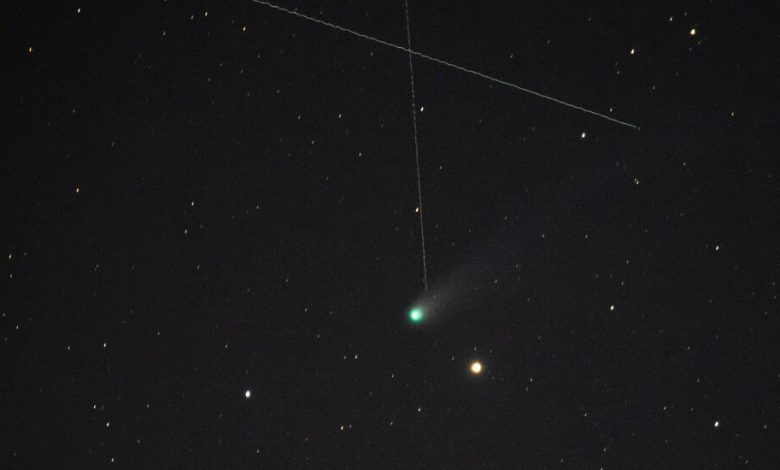Comet Pons-Brooks Is Having Its Last Hurrah

Time is running out for you to spot Pons-Brooks, the devil-horned comet that swoops into view once every 71 years. Last visible to people on Earth in the 1950s, the comet is prone to outbursts, or unexpected flares in brightness.
“It’s an exceptional comet,” said Eliot Herman, a retired biotechnologist at the University of Arizona and an astrophotographer who has been tracking Pons-Brooks for several months. “Not only does it get brighter as it comes closer to the sun, but also the comet is changing drastically day to day,” he said.
The comet, a green ball of ice, caught the attention of the public last July, when it looked as if it had sprouted horns after an outburst through its dusty atmosphere. Some likened the comet’s shape to the Millennium Falcon spacecraft that Han Solo and Chewbacca use in the Star Wars franchise. The comet had a series of additional outbursts in the fall, including one on Halloween.
By December, Pons-Brooks had hints of a tail. That feature became longer and more prominent in early March as the comet sailed closer to the sun. Some hoped it might flare brightly enough to be seen during the total solar eclipse on April 8, but it was not visible to the unaided eye during the event.

Pons-Brooks in outburst with its characteristic devil horns, or, as some saw, its Millennium Falcon shape.Credit…Eliot Herman
There are just a few days left to catch sight of Pons-Brooks before it reaches the point at which it is nearest the sun on April 21. In that phase, known as perihelion, the sun’s light will block the comet from view.
To see the comet, Bill Cooke, an astronomer who leads NASA’s Meteoroid Environment Office, recommends going outside at twilight and scanning the western horizon using binoculars or a telescope. Find Jupiter, the brightest object in the night sky other than the moon. Pons-Brooks will be to the lower right of it.
But don’t expect to see its characteristic devil horns. “The horns have gone away now,” Dr. Cooke said. “It looks more like the typical comet people envision.”
In about a week, the comet will duck below the horizon, lost to the northern sky. People in the southern hemisphere may be able to spot the comet through May, though it will appear much dimmer.
After that, Pons-Brooks will bid farewell to stargazers on Earth for another seven decades as it embarks on another journey around our sun.